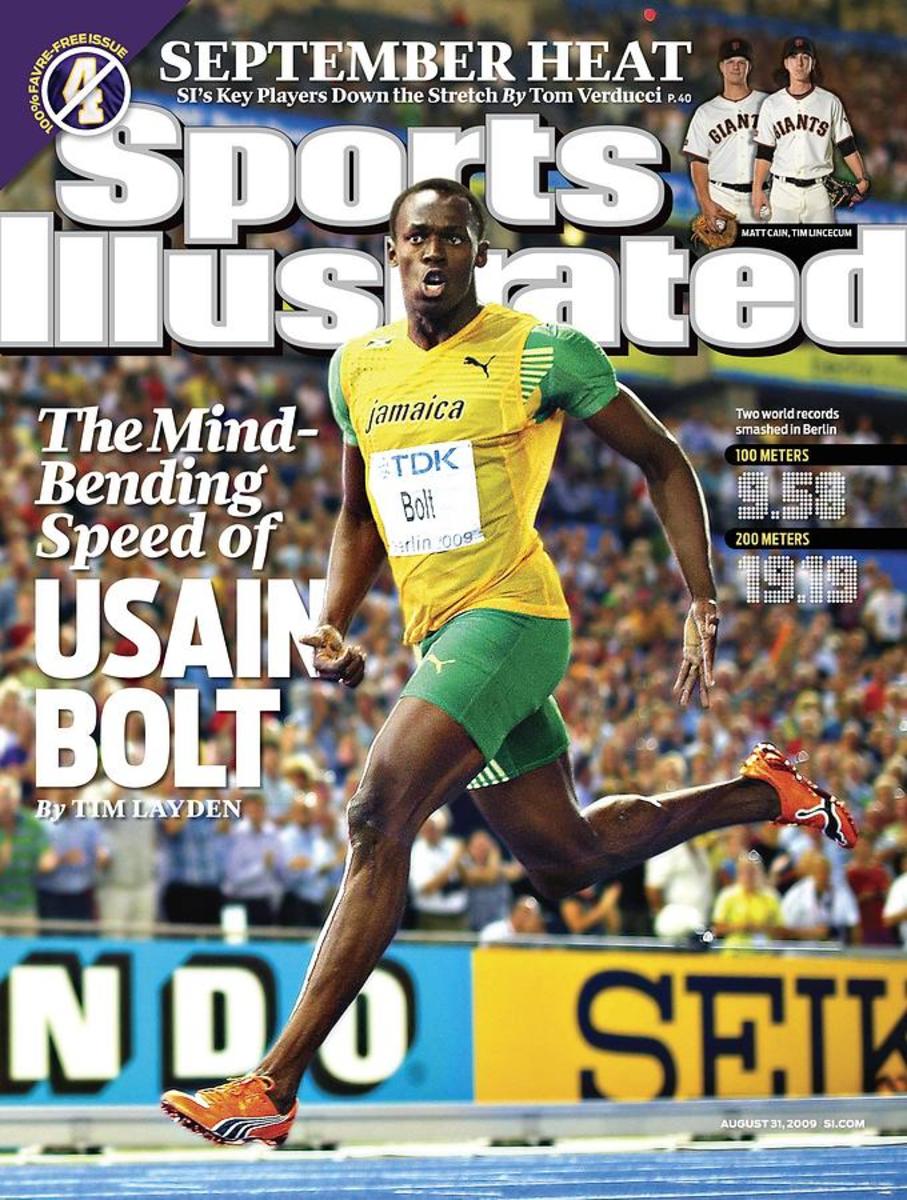SI:AM | Aaron Judge Might Actually Do It
Good morning, I’m Dan Gartland. I’m still not too confident in the Yankees as a whole, but Aaron Judge is unstoppable.
In today’s SI:AM:
🏈 Why keeping Jimmy G could hurt Trey Lance
If you're reading this on SI.com, you can sign up to get this free newsletter in your inbox each weekday at SI.com/newsletters.
61 is within reach
Aaron Judge is making a serious run at Roger Maris’s American League home run record after hitting his 51st of the season last night in Anaheim.
In the fourth inning of the Yankees’ 7–4 win over the Angels, Judge took Mike Mayers deep to right center after the righty elevated a fastball over the plate. It was his second homer in as many nights after hitting his 50th Monday, making him the 10th player in MLB history to have multiple 50-homer seasons.
That leaves him 10 homers shy of Maris’s 61 with 32 games to play. Let’s do a little math. Judge is averaging one home run per 10.9 plate appearances this season. At that rate, he’d need 109 plate appearances to tie Maris. He’s averaging 4.4 plate appearances per game played this season. With 32 games left, that works out to 141 plate appearances if he plays in each remaining game. That should be more than enough to at least tie Maris. In fact, if Judge makes 141 plate appearances, he’d only need to average a homer every 14.1 times at bat to Maris, a rate 29% slower than what he’s accomplished already this season.
The inevitable discussion as Judge inches closer to Maris’s mark will be whether the 61-homer plateau is baseball’s “real” record. No player in the PED testing era has hit 60. In fact, only four players other than Judge have hit 50 since 2010. The validity of the home run record is a subject ripe for hot takes, but you don’t have to compare Judge to Barry Bonds, Mark McGwire and Sammy Sosa to appreciate what a uniquely impressive season he’s having.
Judge is currently leading the majors in the following categories: home runs, RBIs, runs scored, slugging percentage, OPS and total bases. He’s also leading the AL in walks. (Judge has 76, miles behind MLB leader Juan Soto’s 112.) He’s hitting like Bonds while playing primarily in center field for the first time in his career—as a 6'7", 282-pound 30-year-old!
What makes Judge’s season the most remarkable, though, might be just how far ahead of his peers he is. NL home run leader Kyle Schwarber has a comparatively paltry 36 dingers. Only nine players in the big leagues (including Judge’s teammate Anthony Rizzo) have hit 30 so far this season.
Judge has been a terror ever since his first full season in 2017, when he hit an AL-best 52 homers (then Marlin Giancarlo Stanton led all players with 59 that year), but he’s taken his game to another level in recent years. During his first three full seasons, Judge ranked near the bottom of the league in strikeout rate, but he’s cut down on K’s significantly over the past two years, dropping his strikeout rate from 31.5% in ’19 to 25.2% this year.
His improvements are coming at just the right time, too. Judge is set to hit free agency this winter after turning down a contract-extension offer before the season. If he manages to break Maris’s record, it might earn him a few extra dollars.
The best of Sports Illustrated
In today’s Daily Cover, Ross Dellenger celebrates the return of one of my favorite college football rivalries: West Virginia and Pitt’s Backyard Brawl:
No single chapter of the Brawl featured bigger heroes and battle wounds than “13–9.” Thursday night’s resurrection of this century-old series is a reminder of college football’s rich tradition, elegant pageantry and, for some, agonizing history. The Mountaineers enter the game, as they have for years now, holding a special distinction—no major college football program has won more games in its history without having claimed a national championship. Fifteen years ago, on a cold night in Morgantown, the Mountaineers missed their latest chance at destiny.
Conor Orr argues that the Niners’ decision to hang on to Jimmy Garoppolo could have a negative impact on Trey Lance. … Nick Selbe breaks down Albert Pujols’s surprising resurgence after years of subpar performance at the plate. … On the eve of the college football season, Kevin Hanson has an NFL mock draft.
Around the sports world
Naomi Osaka and defending champion Emma Raducanu both lost their first-round singles matches at the U.S. Open. … Commanders running back Brian Robinson Jr. made the team’s initial 53-man roster just days after he was shot in an attempted robbery. … British Open champion Cameron Smith headlines the latest list of defectors to LIV Golf. … Avi Creditor has a list of teams and players to watch as European soccer’s transfer window closes tomorrow. … Jon Gruden says he wants another chance in the NFL after last year’s email scandal. … Former lacrosse star Jared Bernhardt made the Falcons’ initial roster as a receiver.
The top five...
… moments in baseball last night:
5. Oneil Cruz’s ridiculously strong throw on a double play.
4. Nolan Arenado’s concentration on a grounder that hit the base and his accurate jump throw to second.
3. Dodgers prospect James Outman (what a baseball name!) hit for the cycle for the second time in four games.
2. Umpire Adrian Johnson’s hot-mike moment.
1. A young Nationals fan’s long quest to give away a ball.
SIQ
On this day in 1903, which New York Giants pitcher earned complete-game victories in both ends of a doubleheader for the third time that month?
- Christy Mathewson
- Luther Taylor
- Jack Cronin
- Joe McGinnity
Yesterday’s SIQ: On Aug. 30, 1984, which future Hall of Famer grounded into his record-breaking 33rd double play of the season?
- Cal Ripken Jr.
- Gary Carter
- Eddie Murray
- Jim Rice
Answer: Jim Rice. He ended up grounding into 36 double plays that season, which remains the single-season record. The record was previously held by Jackie Jensen, another talented Red Sox outfielder, who grounded into 32 double plays in 1954.
Rice grounded into a ton of double plays during his 16-year career. He led the majors in that category in four straight seasons from 1982 to ’85, averaging 32.75 per year during those years. But that stretch was also one of the best of his career. In ’83, he led the AL with 39 home runs, led the majors with 126 RBIs and finished fourth in MVP voting. (Although, modern analysis shows that Rice wasn’t as valuable as he might have appeared back then. As a 2010 post on Beyond the Box Score laid out, Rice’s propensity for grounding in double plays hurt his teams significantly, decreasing his career WAR by 4.5.)
Rice is tied for eighth on the all-time list of double plays grounded into, which actually undersells just how often teams turned two against him. Rice played 16 seasons in the majors. Every other player in the top 10 played at least 20. The career leader is Albert Pujols, who has grounded into 423 double plays in 12,944 plate appearances over the course of 22 seasons. That’s one double play every 30.6 plate appearances. Rice, meanwhile, grounded into 315 double plays in 9,058 plate appearances, or one every 28.8 times at bat. That’s more frequently than any other player in the top 30 of the career leaderboard.
Rice has nothing on Hall of Fame catcher Ernie Lombardi, though, who grounded into 261 double plays at a rate of one every 24.3 plate appearances, the worst percentage of any player with more than 63 career GIDP.
From the Vault: Aug. 31, 2009

In 2009, Usain Bolt was on top of the world. His incredible performance at the Olympics in Beijing the year before (winning the 100 meters and 200 meters while setting new world records in both events) made him a global superstar. But at the 2009 World Championships, he raised the bar.
Bolt’s times in Beijing (9.69 seconds in the 100, 19.30 seconds in the 200) were otherworldly—unbeatable, perhaps. But then at the World Championships in Berlin in 2009, Bolt swept both events again while setting new world records. It was an unbelievable accomplishment, Tim Layden wrote:
The entire meet was contested in Bolt’s lengthening shadow. Either his 100 or 200 alone would stand among a handful of the greatest single performances in track and field history, a list topped by Bob Beamon’s still incomprehensible record-setting long jump at the 1968 Olympics. In the same stadium where Jesse Owens won four gold medals in front of Hitler in 1936, white German youths painted Bolt's name on their chests and carried Jamaican flags. In the U.S., where track and field has long been relegated to niche status, Bolt featured prominently not only on SportsCenter, but also on The Daily Show with Jon Stewart. He has crossed into mainstream sport and popular culture like no track athlete since Carl Lewis, and with far more panache. Whether by his signature Lightning Bolt pose or his postrace celebrations or his generally behaving as if the world track stage is just another Kingston dance club, Bolt injects joy into the proceedings. In his own country, crime nearly ceases when he runs.
But Layden couldn’t help but point out the elephant in the room. Bolt’s times were so impressive that it was natural to wonder whether he was using performance-enhancing drugs. It seems unfair now, given that Bolt has never tested positive, but sprinting is a sport where the top competitors have too often been exposed as cheaters. Tim Montgomery and Justin Gatlin had their world records in the 100 meters thrown out due to doping suspensions. The sport’s recent history invited skepticism, especially when Bolt was so far ahead of the competition. But Bolt was clean, which made him the biggest track star of his generation.
Check out more of SI’s archives and historic images at vault.si.com.
Sports Illustrated may receive compensation for some links to products and services on this website.
